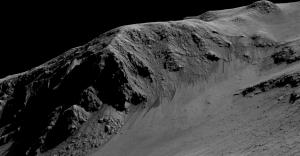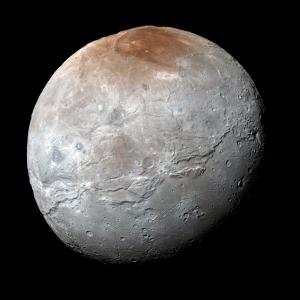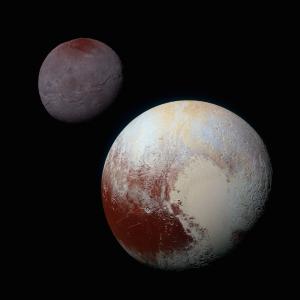
Stargazing Night - CLOSED
- Where:
- Frosty Drew Observatory
- When:
- Friday October 2, 2015 CLOSED
- Cost:
- $1 Suggested Donation per Person
Tonight's forecast is calling for full cloud cover, rain, and high winds gusting to 50mph. This is not a very favorable forecast for stargazing as we will not have any chance of observing the cosmos. The 74% waning gibbous Moon will not rise until 10:09 p.m. and would have given us a nice bout of super dark skies. With such a reliably dismal forecast, we will keep the Observatory and Sky Theatre closed tonight. We will return to our regular Stargazing Nights schedule on Friday, October 9th. In the mean time, check out some of the amazing photos of last Sunday's total lunar eclipse on the Frosty Drew Observatory Facebook page while sitting out this stretch of stormy weather.
-------------------------------------------------------------------------
Weekly Happenings
Scott MacNeill
Earlier this past week, NASA released new findings from the Mars Reconnaissance Orbiter's (MRO) Compact Reconnaissance Imaging Spectrometer for Mars (CRISM) and the High Resolution Imaging Science Experiment (HiRISE) of hydrated salts signatures along existing downhill flows that have been previously thought to be caused by liquid water. These findings provide the strongest evidence yet for present day liquid water flows on the surface of Mars.
These downhill flows, called “recurring slope lineae” (RSL), are found along steep slopes over seasonal cycles. During warmer seasons when temperatures rise above -10º F, active flows have been observed, becoming inactive and disappearing during colder seasons. These downhill flows appear to be a briny mix of water and hydrated salts. Briny solutions like this significantly drop the freezing temperature of the water allowing for liquid water to exist at very cold temperatures. On Earth we use a similar solution to melt ice and snow on our winter roadways. Scientists think these briny flows are likely absorbed to the surface from a shallow subsurface water flow.
“Following the water” has the been the general direction of our search for life away from Earth and this finding further advances that principle. Finding liquid water on the surface of Mars increases our knowledge of how life could be supported there and marks a location of life supporting resources for future life on Mars.
Follow along with this discovery and all the amazing things that MRO is accomplishing at Mars on the MRO mission page.
Yesterday, the NASA New Horizons mission team released a high resolution, color image of Charon, Pluto's largest Moon. This new image is mind blowing. Combining images shot in the blue, red and infrared spectrum taken by the Ralph/Multispectral Visual Imaging Camera (MVIC), enable color enhancement to highlight variations of properties on Charon's surface. This is the first image to showcase the dramatic color differences that exist over the dark north polar region and the mid latitude to southern polar regions and offers us some clues to Charon' s history.
Charon is about 754 miles in diameter and may have resulted from an impact that blasted off Pluto's crust. The north polar region displays a significantly darker red color than the rest of Charon, leaving scientists to speculate that there may be a material transfer between Pluto and Charon, possibly occurring when Charon is subject to Pluto's thin atmosphere. Across the mid-latitudes of Charon stretch a huge planet wide canyon. This canyon is upwards of 1000 miles long, reaching four times the length of the Grand Canyon. Separating the north and south hemispheres of Charon, the monstrous canyon rivals the depth of the Grand Canyon with many places measuring twice as deep. The southern hemisphere has much less cratering than the northern hemisphere. This indicates a much younger crust in this region than in the north. A potential explanation is the previous existence of a subsurface ocean that froze and cracked open Charon's crust. This would have allowed a water based lava to flow onto Charon's surface.
With most data from the historic July 14, 2015 flyby still on board the New Horizons spacecraft, the anticipation continues to build. We are seeing an amazing story unfold as these data sets come back. Over the next year our understanding of this fascinating world and its moons will reach new heights of awesome! Follow along with the action at the NASA New Horizons mission page
-Scott




